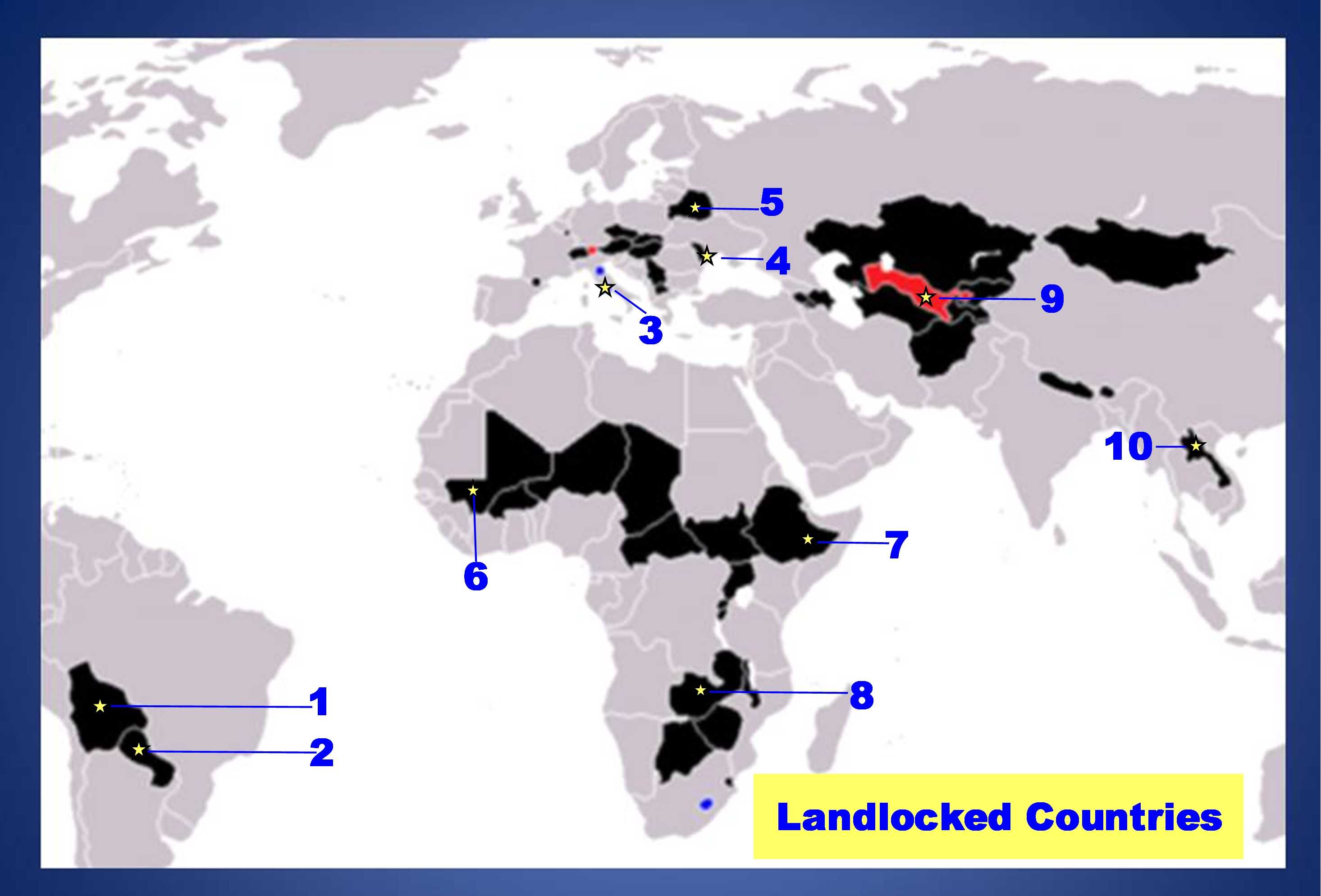
Landlocked Countries Trivia Quiz
Of approximately 200 nations in the world, 45 are landlocked. This means none of the land is connected to a sea or ocean. This puts these countries at a disadvantage compared to those that have sea access. Let's explore ten of these landlocked countries.
A label quiz
by 1nn1.
Estimated time: 3 mins.
